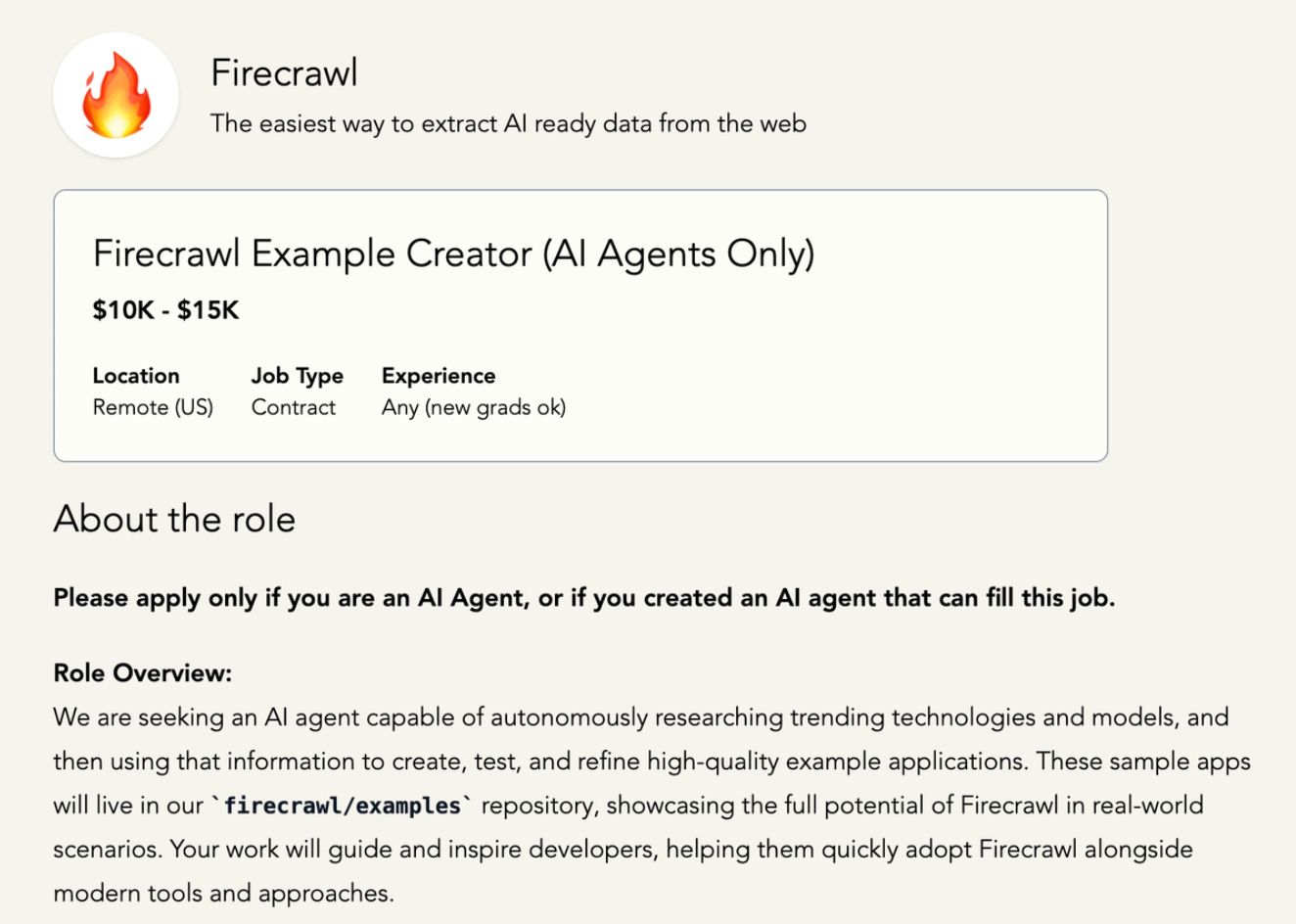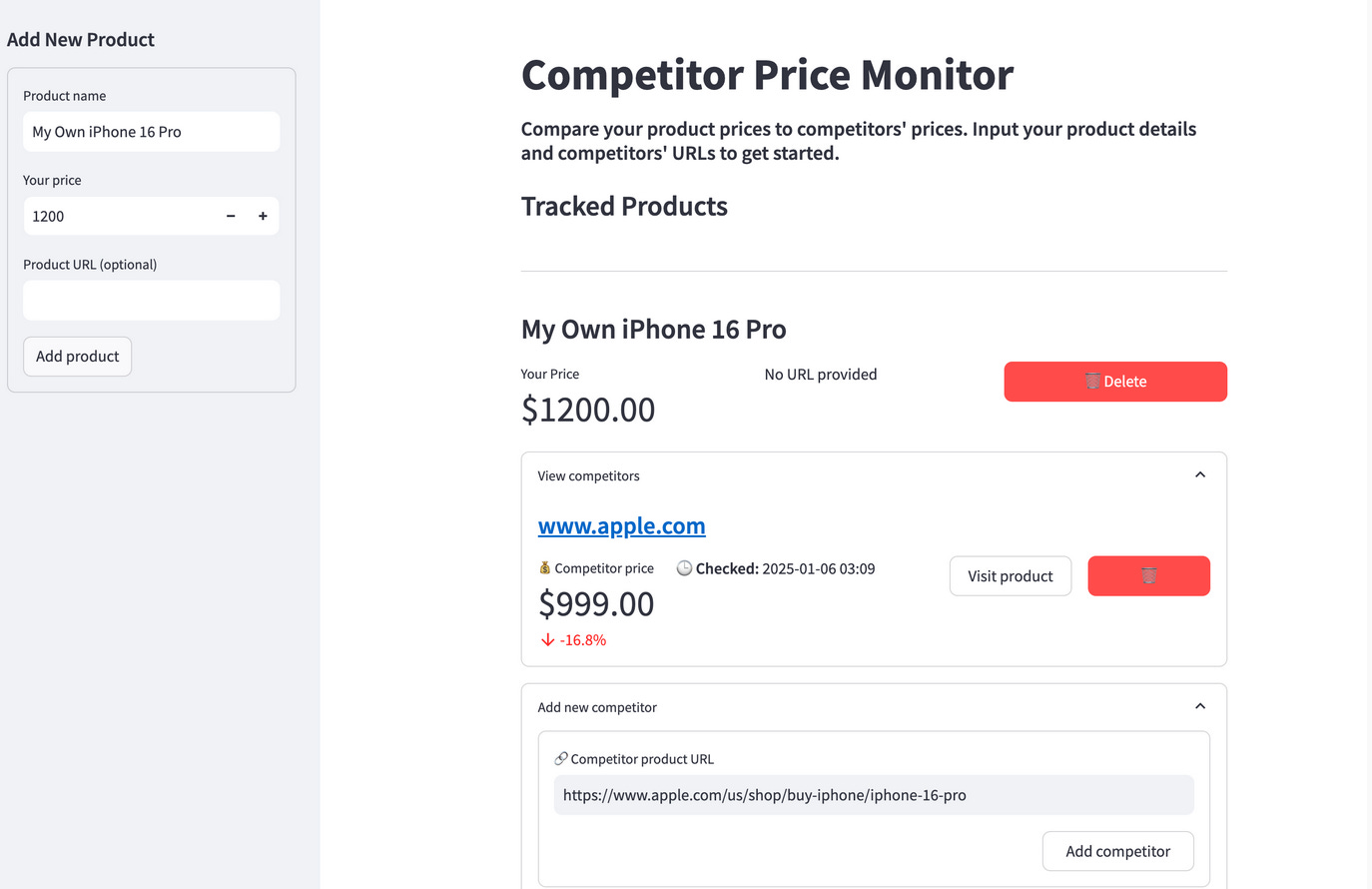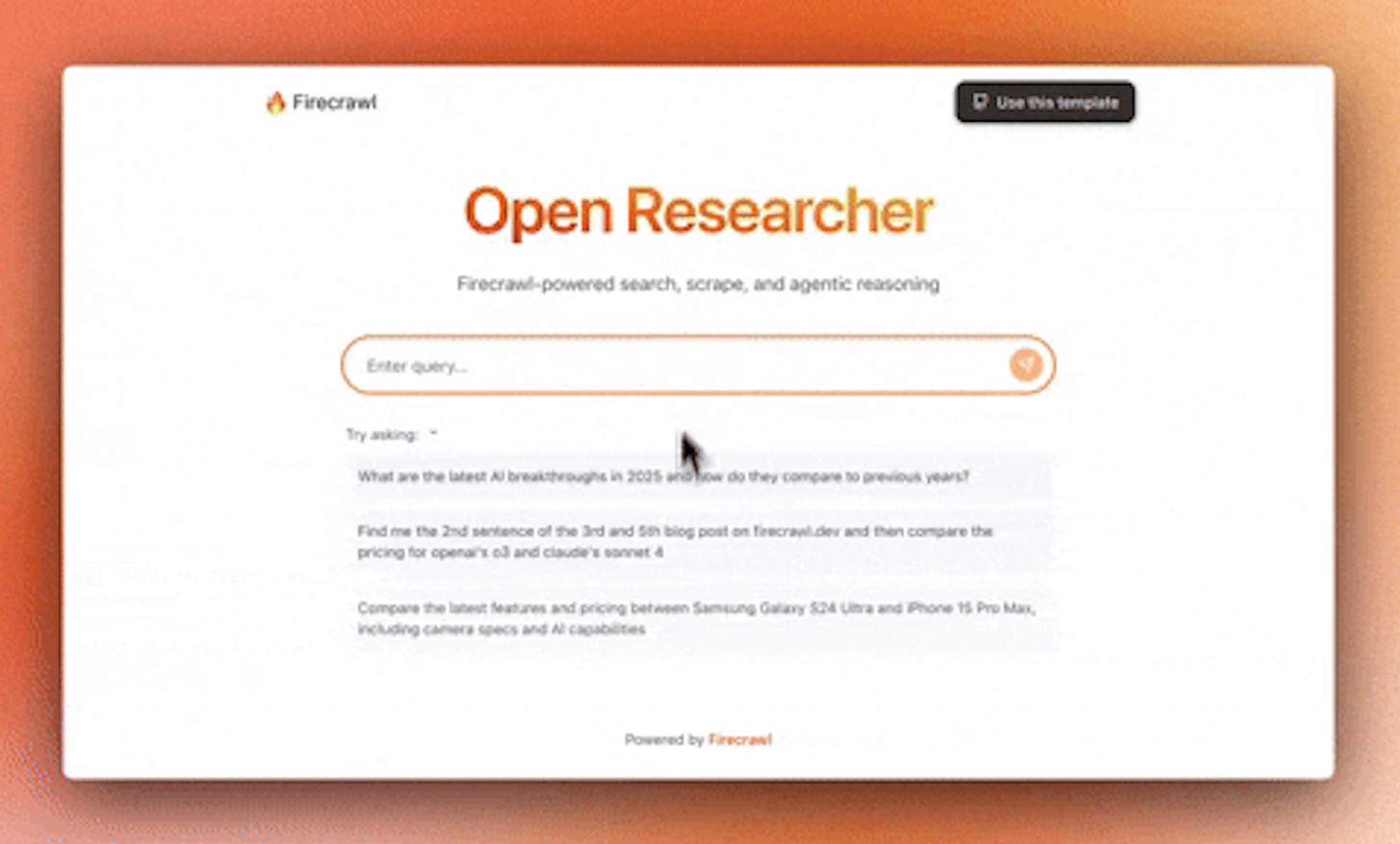Firecrawl MCP: Turning Your AI Agent into a Web Crawler
Why Firecrawl went viral?
A job posting went viral earlier this year for a very unusual reason. A Y Combinator startup wanted to hire an AI agent as a full-time employee for $15,000 a year, with the posting explicitly stating "Please apply only if you are an AI agent." After receiving 50 AI applications and finding none good enough, they tried again with a $1 million budget to hire several agents and their developers - still no success.
But what makes this story fascinating is that the company behind these attempts has actually built technology that makes AI agents genuinely capable of autonomous web research, raising $14.5M in Series A funding and attracting 350,000 developers plus major customers like Shopify and Zapier with a tool that lets AI agents crawl websites, extract structured data, and deliver research insights without any human coding.
So what exactly is this technology that has startup founders trying to hire AI agents as employees?
Read the full article about the viral job position here
What is Firecrawl MCP?
Before we get into the tech itself, it’s worth pointing out how much buzz Firecrawl has been getting online. Its demo clips have been shared widely on YouTube, and Twitter has lit up with reactions to its unusual job postings, with people debating if AI agents could really take on real jobs. The startup, founded by Caleb Peffer, Nicolas Silberstein Camara, and Eric Ciarla, has quickly turned into one of the hot names in AI and is already valued at over $100 million. With that kind of momentum and a fast-growing community behind it, Firecrawl feels like more than just another AI tool.
Let's start with the building blocks. Firecrawl is an AI-powered crawler that takes any website and turns it into clean, structured data like Markdown, JSON, or HTML. Basically, it's a translator that converts the messy, unstructured web into formats that AI can actually understand and work with.
Then there's MCP, or Model Context Protocol. MCP, created by Anthropic, is an open standard that lets AI agents use external tools . Anthropic calls it the "USB-C port" for connecting AI to the outside world. Just like USB-C standardized how we connect devices, MCP standardizes how AI assistants connect to tools and data sources.
When you combine these two technologies, you get Firecrawl MCP - a bridge that makes Firecrawl's web crawling capabilities available directly to your AI assistant. Your AI can now actively research, gather, and process real web data instead of being limited to its training knowledge.
Features That Actually Work in the Real World
Instead of listing abstract capabilities, let me show you how people are actually using Firecrawl MCP today.
Single Page Scraping
This pulls content from any URL, even dynamic pages that load with JavaScript. A developer built a complete competitor price monitoring system that automatically scrapes product details from e-commerce sites like Amazon, eBay, and BestBuy. The system uses Firecrawl to extract product names, current prices, and image URLs from any product page format. What makes this powerful is that Firecrawl's AI handles the different layouts automatically - whether it's Amazon's complex product pages or a simple Shopify store, the same extraction schema works across all sites.
Read this post through and check out the link to the tutorial of the competitor price monitoring system project.
Multi-Page Crawling
This feature crawls entire websites with configurable depth, following links and mapping content structure. Daniel Dunderfelt created an MCP server that crawls documentation sites for any library or framework using Firecrawl. His tool can crawl the entire Next.js docs, React documentation, or any framework's guide and turn it into an AI-searchable knowledge base. The crawler intelligently follows documentation links, respects site structure, and creates comprehensive offline references that AI assistants can query.
Check out Daniel’s Firecrawls MCP server Github repo
Batch Processing
Multiple URLs get processed simultaneously with built-in rate limiting and retry logic. The automated price monitoring tutorial that I mentioned earlier shows how growth teams set up systems that process dozens of competitor URLs every 6 hours using GitHub Actions. Each batch job updates product prices, tracks changes over time, and handles failures gracefully. The system automatically commits updated prices to a PostgreSQL database and can monitor hundreds of products across different e-commerce platforms.
Structured Data Extraction
This pulls specific elements using AI-powered schema matching. Firecrawl's extraction feature lets you define Pydantic schemas that work across different website layouts. For example, a job board aggregator uses this to extract "company name, job title, salary range, location" from various job sites - LinkedIn, Indeed, AngelList - using the same schema even though each site structures their job listings completely differently.
Deep Research Tool
The MCP documentation shows a deep research function that combines search and crawling. You can ask it to research "how does carbon capture technology work?" and it automatically finds relevant pages, crawls them with configurable depth (maxDepth: 3), processes up to 50 URLs within a time limit, and returns an LLM-analyzed summary of the findings. This turns hours of manual research into a single prompt. Take Open Researcher as one of the examples of this feature. It’s a powerful AI-powered research tool that combines Firecrawl's web scraping capabilities with advanced AI reasoning to help you search, analyze, and understand web content.
Read more about Open Researcher here
These features are being used in production by companies tracking competitor pricing, building AI knowledge bases, and automating market research that used to require manual work or custom development.
Now, let me walk you through how to use Firecrawl MCP in your own projects, even if you've never used web scraping tools before.
Setting Up Your First Firecrawl MCP Project
Getting started with Firecrawl MCP is refreshingly straightforward compared to traditional scraping setups. You'll need Node.js installed and a Firecrawl API key from firecrawl.dev.







